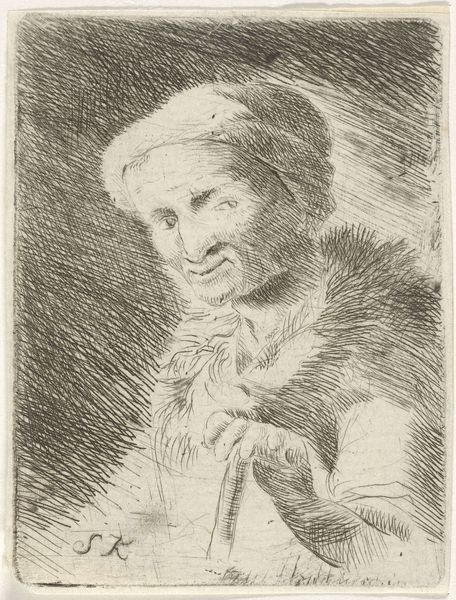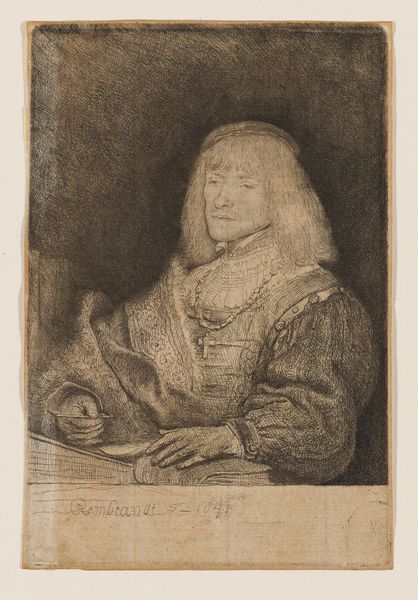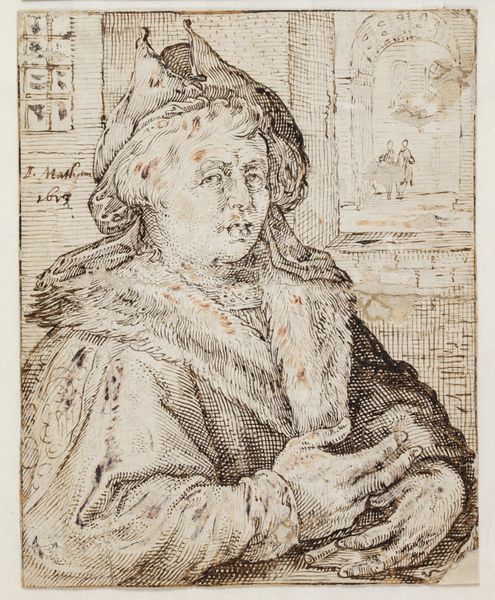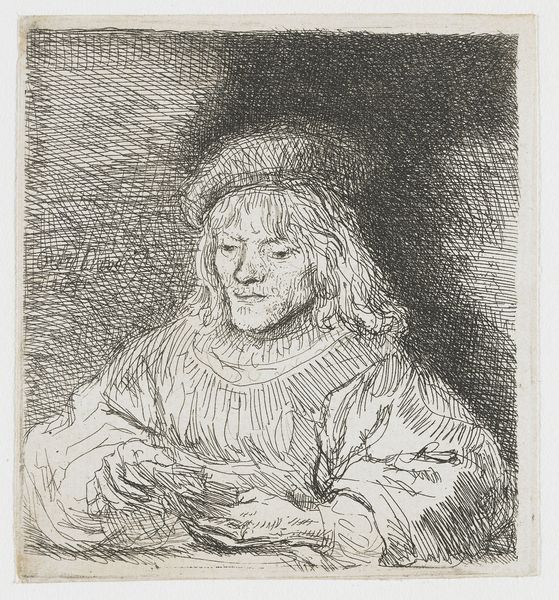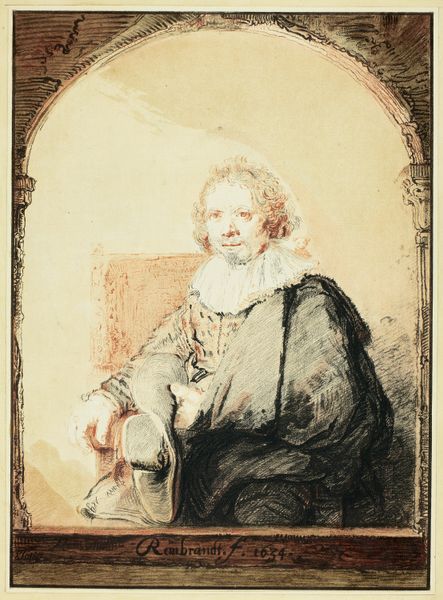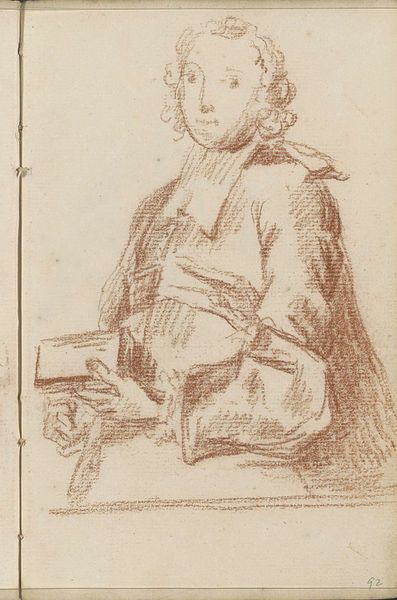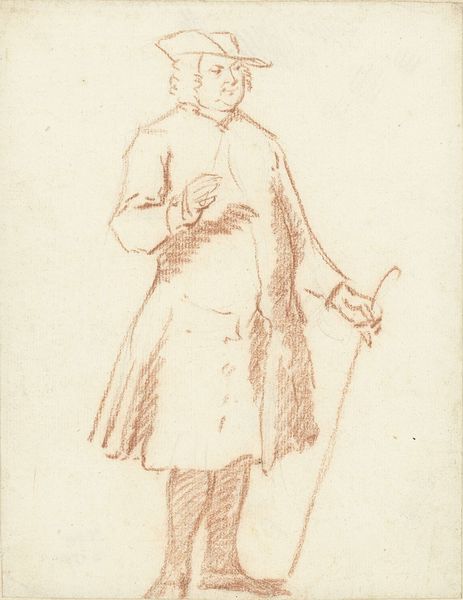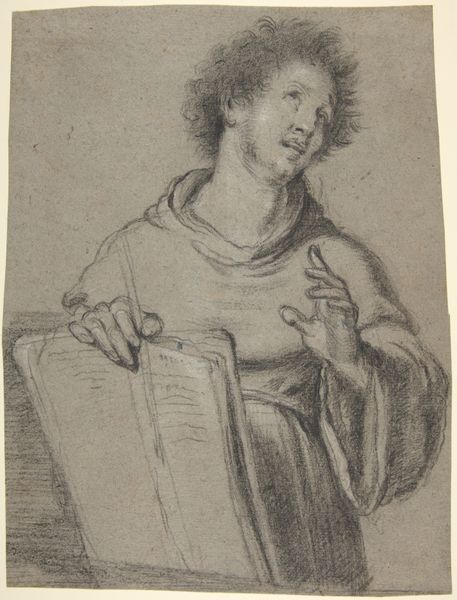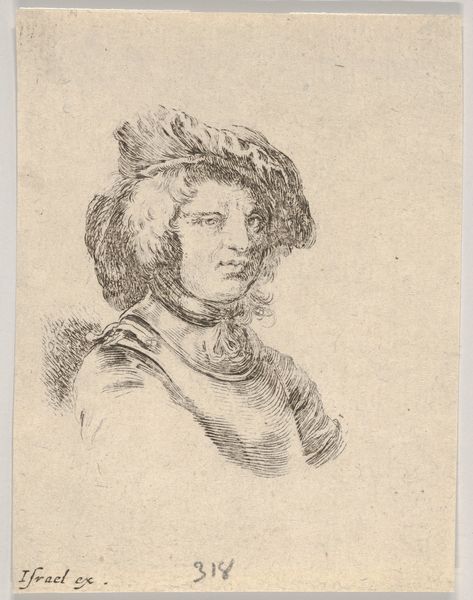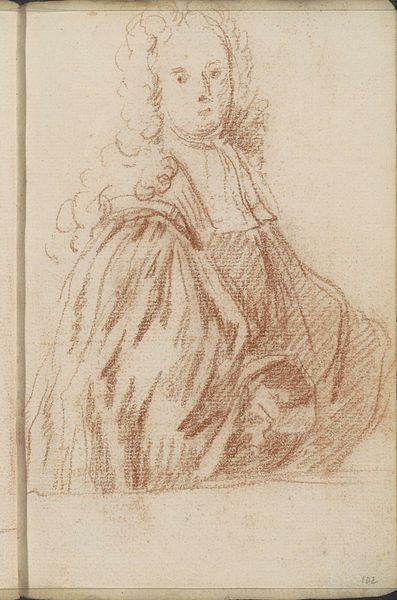
Ein Mann mit Pelzmütze und Pelzrock lachend eine Pfeife haltend 1630
0:00
0:00
drawing, etching, intaglio, ink, engraving
#
portrait
#
drawing
#
baroque
#
etching
#
intaglio
#
ink
#
engraving
Copyright: Public Domain
Curator: Let's take a closer look at this etching from 1630, titled "A Man with Fur Cap and Fur Coat Laughing and Holding a Pipe", by Jan van de Velde II. It's part of the Städel Museum collection, an interesting little engraving on paper. Editor: He seems very jovial. My initial reaction is pure delight. It feels almost like looking at a still from a comedic play, doesn't it? The detail in the fur is quite something for an engraving of this scale. Curator: Indeed. Jan van de Velde II came from a family of artists and was operating within the Dutch Golden Age tradition of detailed portraiture and genre scenes. There’s definitely a performance aspect here, a constructed image meant for public consumption. Engravings such as this played a huge role in disseminating imagery across Europe. Editor: The pipe seems significant too. The symbolism around tobacco use in the 17th century is layered, isn't it? Pleasure, social bonding, exotic goods, all bundled up in one little accessory. He almost brandishes it like a scepter. The large fur hat could speak of wealth and status as well. Or, does it evoke a comedic caricature meant for moral teaching? Curator: I think it is meant to reflect prosperity and pleasure, but maybe also overindulgence and foolishness, which would reflect an elite class distant from moral teaching, not moral representation, itself. His boisterous laughter and attire were likely understood differently based on one’s social standing and personal beliefs at the time. This brings us to how images shaped cultural perception. Editor: It makes you wonder about the context in which this etching was viewed. Was it meant to be satirical, perhaps subtly mocking the upper classes? Curator: It could be seen either way, that’s the strength of images at play. I wonder how someone in 1630s Amsterdam, navigating a rapidly changing social landscape, would interpret this man's expression. It could have been read as self-assured or foolish, depending on who was looking. Editor: Looking at this, you find yourself wondering who he really was, what his story was behind all that finery and the slightly too-broad smile. Curator: And ultimately, this etching gives a little glimpse of art's dynamic social existence in its time. Editor: Definitely a glimpse of a moment and the symbols through which the world was understood, presented with subtle but evocative emotional detail.
Comments
No comments
Be the first to comment and join the conversation on the ultimate creative platform.
